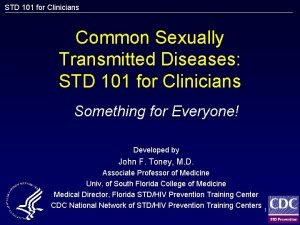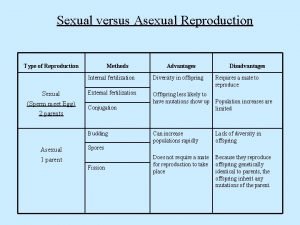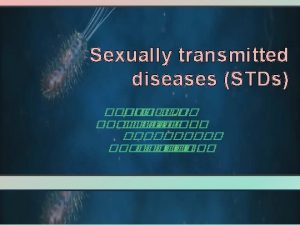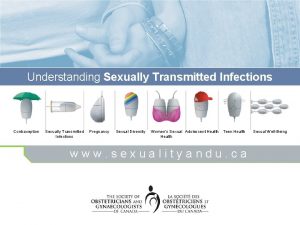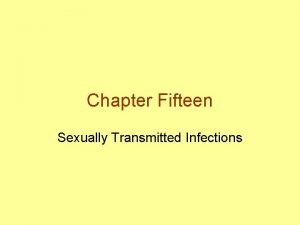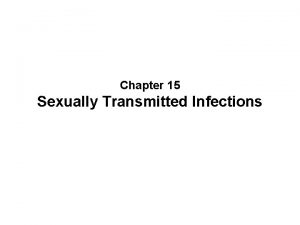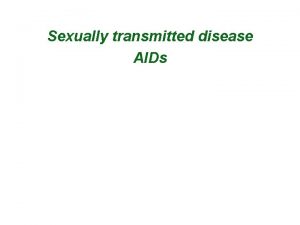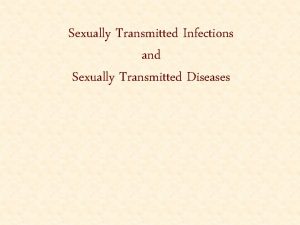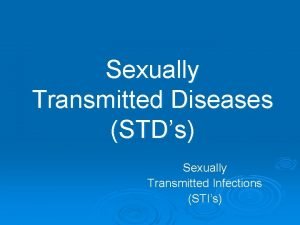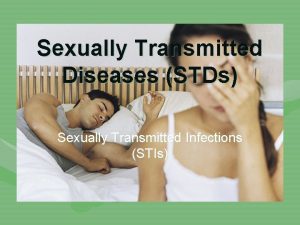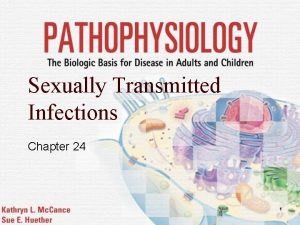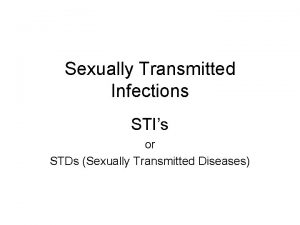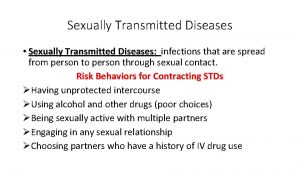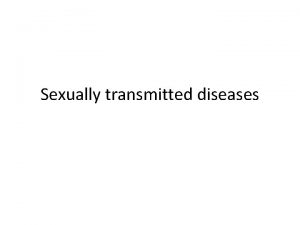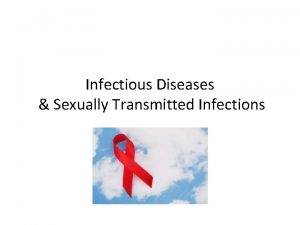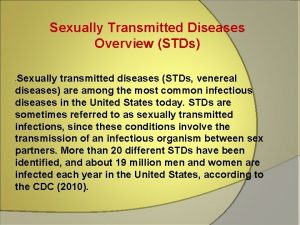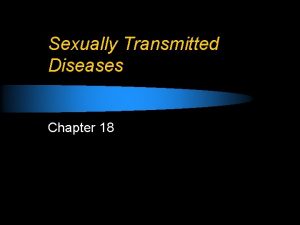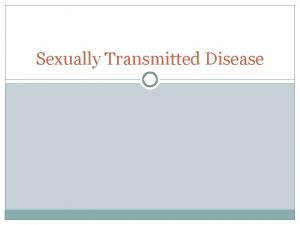Patterns of Age Mixing and Sexually Transmitted Infections


























- Slides: 26

Patterns of Age Mixing and Sexually Transmitted Infections Julie Kraut-Becher University of Pennsylvania Sevgi O. Aral Division of STD Prevention, CDC

Age Mixing n Population-level determinant – Spread of HIV n Africa n Gay n men Individual-level risk factor – Risky behavior n Unprotected vaginal sex n Lack of consistent condom use

Age Mixing n Increase STI incidence – Directly n Exposure to partner pools with higher STI prevalence – Indirectly n Partnerships marked by power imbalance – Practice of safer sex is difficult

Objectives n Describe age mixing patterns – Nationally representative sample of reproductive age, sexually-active U. S. women n Relate these patterns to self-reported STI history – STI diagnosis or testing or treatment

Methods n Data – 1995 National Survey of Family Growth (NSFG) n Sample – N = 9, 272 sexually-active women 15 -44 years of age n Valid birth date information for themselves and their partner

Methods n Age Difference – Computed for current or most recent partnership – Age difference < 0 n Younger male partner – Age difference > 0 n Older male partner

Methods n Assess extent of age mixing n Describe patterns of age mixing n Examine association between age mixing and STI test, treatment, and diagnosis n Nationally representative sample – Sociodemographic and socioeconomic characteristics – STI history – Sample weights

Results

Results

Results

Results

Results

Results

Results

Results

Results

Results n 15 -17 year-old females

Results n 18 -19 year-old females

Results n 20 -24 year-old females

Results n 25 -29 year-old females

Results n 30 -34 year-old females

Results n 35 -39 year-old females

Results n 40 -44 year-old females

Limitations n Self reports of STI information n STI diagnoses not temporally defined – Cannot determine the causal nature of association between partnership characteristics and STI

Conclusions n Large extent of age mixing n Age mixing varies over the life course n The effect of age mixing on STI varies over the life course

Conclusions n Future research – – – n Biomarkers vs. self-reports Specific infections Race/ethnicity specific Program – Ask about age mixing with current sex partners n n Screening parameter Target interventions
 A bacterial std that usually affects mucous membranes
A bacterial std that usually affects mucous membranes Chapter 24 sexually transmitted diseases and hiv/aids
Chapter 24 sexually transmitted diseases and hiv/aids Chapter 24 lesson 1 sexually transmitted diseases
Chapter 24 lesson 1 sexually transmitted diseases Std
Std Sexually transmitted diseases
Sexually transmitted diseases Std
Std Stone age, bronze age iron age timeline
Stone age, bronze age iron age timeline Iron age bronze age stone age timeline
Iron age bronze age stone age timeline Understanding the mirai botnet
Understanding the mirai botnet Bone and joint infections
Bone and joint infections Methotrexate and yeast infections
Methotrexate and yeast infections Retroviruses and opportunistic infections
Retroviruses and opportunistic infections How do sponges reproduce sexually and asexually
How do sponges reproduce sexually and asexually Opportunistic infections
Opportunistic infections Opportunistic infections
Opportunistic infections Storch infections
Storch infections Storch infections
Storch infections Neurosiphyllis
Neurosiphyllis Bacterial vaginosis
Bacterial vaginosis Postpartum infections
Postpartum infections Genital infections
Genital infections Amber blumling
Amber blumling Innate immunity first line of defense
Innate immunity first line of defense Acute gingival infections
Acute gingival infections How do whales reproduce sexually
How do whales reproduce sexually Parasitism phylum
Parasitism phylum Do sea urchins reproduce sexually or asexually
Do sea urchins reproduce sexually or asexually





